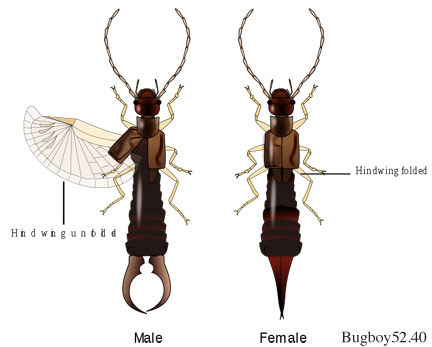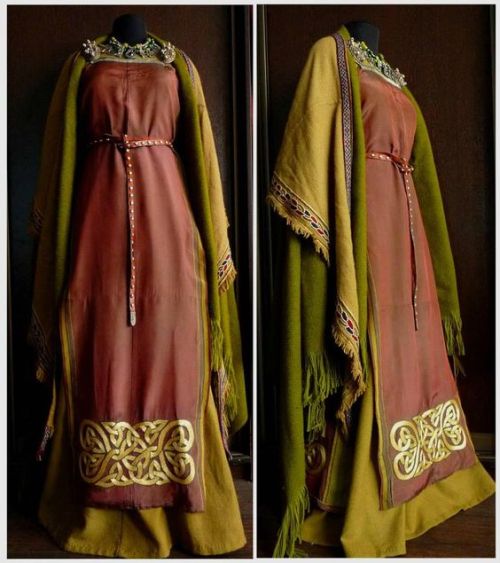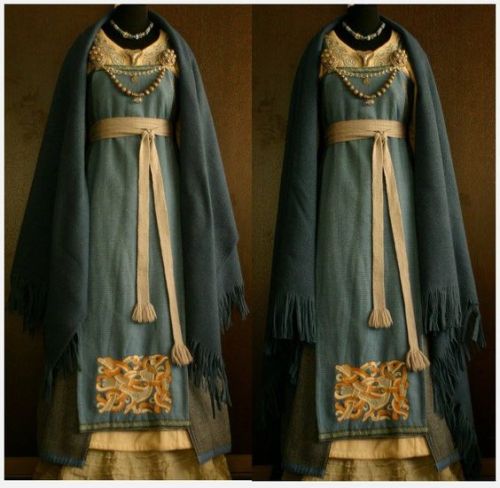Can You Believe That There Are People Who Live So Close To The Ocean That They Can Just Think “hey,
Can you believe that there are people who live so close to the ocean that they can just think “hey, I should go to the ocean” and then they just do???
More Posts from Goblin-in-the-rain and Others
I'd love to hear more about what makes the wings of the stylops so unique! Wings are always fascinating to me
Almost all insects with wings normally have four of them, except that in beetles, the front wings became the shields we call Elytra:

And in the true flies (diptera), the HIND wings became little vibrating knobs we call halteres, which are organic gyroscopes for collecting information about air pressure, direction and elevation, easiest to see on larger flies like this crane fly:

So, the male Strepsiptera is actually the only insect other than flies to have evolved halteres, but the Strepsiptera's halteres are evolved from the FRONT wings:

Their hind wings are odd enough too; simple "fans" unlike the intricately veined wings of other insects, but still not as unusual as forewing halteres. It's thought to be convergent evolution, and that they may have once been elytra like the beetles have. A connection to beetles is also suggested by the fact that a few beetle groups have larvae very similar to those of the strepsipterans, which look like this:

Lovably nasty larvae! They jump, and they're all spiny, and they actually use an acid secretion to melt their way into their first host.
There's one other insect group that incidentally evolved elytra shields, earwigs!

But earwigs can't be ancestral to either beetles or strepsiptera, because earwigs don't go through a larval stage, which the big evolutionary divide for insects; all the insects with larvae are thought to have just one common ancestor, splitting off from the other insects fairly early.






Feb - Apr 2025, different tree bark textures & colours




Harlequin beetles in Brisbane, QLD, Australia



Prancing Peacock Spiders
Maratus volans is perhaps the most widely known member of the genus Maratus, also known as peacock spiders– part of the jumping spider family– which contains 108 recognised species. Maratus volans is common across Australia and the island of Tasmania, and occur in a variety of habitats. They are most commonly found among leaf litter and dry vegetation, especially in dunes, grasslands, and sparse deciduous forests.
Peacock spiders like M. volans are extraordinarily small; both sexes only reach about 5 mm (0.19 in) in length. Members of the Maratus genus are famous for the male’s coloration, and M. volans is no exception; the abdomen is covered in brightly colored microscopic scales or modified hair which they can unfold for mating displays. Some males can also change the color of their scales, and the hairs can reflect both visible and ultraviolet light. Female M. volans lack this distinctive coloration, and are a drab grayish brown.
Reproduction for M. volans occurs in the spring, from August to December. During this period, males will approach females and raise their patterned abdomens and third pair of legs for display. He then approaches, vibrating the fan-like tail, and dances from side to side. If a female is receptive, he then mounts her; if not, she may attempt to attack and feed on him. This may also occur post-copulation. In December, the female creates a nest in a warm hollow in the ground where she lays her eggs. Each cluch contains between 6 and 15 eggs, though females typically lay several clutches. Male M. volans hatch the following August, while females typically hatch in September. Both sexes mature quickly and typically only live about a year.
Like other jumping spiders, peacock spiders like M. volans do not weave webs. Instead, they hunt during the day time using their highly developed eyesight. These spiders are also able to jump over 40 times their body length, which allows them to pounce on unsuspecting prey like flies, moths, ants, crickets, and other, much larger spiders. Other spiders are also common predators of M. volans, as well as wasps, birds, frogs, and lizards.
Conservation status: None of the Maratus species have been evaluated by the IUCN. However, it is generally accepted that they are threatened by habitat destruction, like many other insects.
If you like what I do, consider leaving a tip or buying me a ko-fi!
Photos
Jurgen Otto 2 & 3
[Image IDs: all images are close-ups of pill millipedes, which are small arthropods (bugs) with a similar appearance to roly polies. They are pill-shaped and segmented with shiny scale-like plating that goes to the ground and covers up all their lil legs.
ID1: a rusty red pill millipede with a black head and mottled black spots on its segments. It’s segments are edged with a pale, slightly translucent yellowish color. It’s photographed from the side. It’s standing on light grayish tree bark.
ID2: another photo of the same or a similar millipede. This one is photographed from a higher angle, making it easier to see black backwards-pointing triangles running down its back. In this image it’s standing on bark covered in moss.
ID3: another photo of the same or a similar millipede on a similar background. This one is photographed from directly above.
ID4: another photo of the same or a similar millipede on a similar background. This one is on its back and half-curled up so its head is right-side up. Its belly and legs are a tan-ish; and its little legs stick up like it’s reaching out.
ID5: two of the red/black millipedes completely curled up on their sides, completely hiding their heads and legs in their plates. These ones are sitting on grey granite. One is slightly smaller than the other.
ID6: a similar millipede to the others, but this one is a much darker maroon red and less shiny. This one has a bright copper stripe behind its head. It’s on leaf litter.
ID7: another darker millipede on leaf litter and coniferous twigs (fir, I think). This one is curled up, but is upright like a wheel.
ID8: a collection of four millipedes on rough grey bark. There is one to the left, two in a vertical row to the right, and one in the center. All of them are curled up except for the center one. The one on the left is orange with black mottled spots and black diamonds running down the center of its back. The one in the center is an ochre color with darker orange edges on the bottom of its segments. It is sparsely mottled with black, with a black head. Behind its head is a yellow stripe, then a black stripe, then no more stripes. It has tall backwards-facing triangles along its back that get smaller and smaller until they disappear, after which there is one big black triangle at the end of the millipede’s body. The top right millipede is a blue-green-grey, similar to the color of lichen. Its segments are edged with thick orange-grey, and it has connected black diamonds running down its back. The bottom millipede is mostly covered in black spots, with orange stripes peeking through at the edge of its segments. There are black diamonds running down its back, which are separated from most of the other mottling by grey.
ID9: a photo of a pill millipede from above and a bit further away than the others. The millipede in this one is almost entirely black, with a bit of gold peeking through. This one is on a pale-skinned person’s hand, and is just a bit shorter than the width of their fingers.
/End IDs]









Pill millipede (not an isopod/roly poly), Glomeris klugii, Glomeridae
Found in Europe and northern Africa
Photos 1-4 by ingridaltmann, 5 by vytautas_tamutis, 6-7 by amujcinovic, 8 by phtevendrews, and 9 (for scale) by bianca_t
Tripodfish, Discoverichthys praecox larva Appreciation Post!! 🩵 💙 🌊





Rare Tripodfish larva, an Ipnopidae species, found on a blackwater dive off Kona, Hawaii. Body size about 3.5cm
📷 credit: Steven Kovacs
You love to sea it 🌊
not exactly using the ask box correctly here but shshshshshsh just wanted to share with the class incase anyone was curious! cats actually can have "skunk stripe" patterns like cashew

images from http://messybeast.com/bicolours.htm it's not the prettiest site but it's got alot of info + images of cats with really funky patterns! great design inspo don't mind me, i just think these kitties look cool
Aww pretty cats! It's nice to know that my ridiculous sparklecat designs have some kind of basis in reality.
Looking at Pinterest drawing tutorials to make myself angrier and more full of rage
Much has been said about unrealistic female anatomy, but is it not even more bizarre and fucking terrible that <90% of generic male drawing tutorials show some kind of monstrous aftermath of bodybuilding, steroids and extreme dehydration and are like "this is a basic male torso"
If you haven't already, mayhaps you could do an excerpt on the Bogong Moth.
Moth Of The Day #135
Bogong Moth
Agrotis infusa
From the noctuidae family. They have a wingspan of 25-35 mm. They tend to inhabit urban areas, forests and woodlands. They can be found throughout Australia, New Zealand and Tasmania. The name derives from the Dhudhuroa (an Aboriginal Australian language) word bugung, which describes the brown coloration of the moth.


-
 0jaybird0 reblogged this · 1 month ago
0jaybird0 reblogged this · 1 month ago -
 the-fish-guy liked this · 1 month ago
the-fish-guy liked this · 1 month ago -
 tianpossum reblogged this · 1 month ago
tianpossum reblogged this · 1 month ago -
 a-companion-by-any-other-name reblogged this · 1 month ago
a-companion-by-any-other-name reblogged this · 1 month ago -
 hewwbwazew liked this · 1 month ago
hewwbwazew liked this · 1 month ago -
 incredible-fishes reblogged this · 1 month ago
incredible-fishes reblogged this · 1 month ago -
 lola777777777 liked this · 1 month ago
lola777777777 liked this · 1 month ago -
 somewhereovertherainbowtables reblogged this · 1 month ago
somewhereovertherainbowtables reblogged this · 1 month ago -
 twoheadstones reblogged this · 1 month ago
twoheadstones reblogged this · 1 month ago -
 twoheadstones liked this · 1 month ago
twoheadstones liked this · 1 month ago -
 ferocious-applesauce reblogged this · 1 month ago
ferocious-applesauce reblogged this · 1 month ago -
 whisperface reblogged this · 1 month ago
whisperface reblogged this · 1 month ago -
 a-peculiar-potoo reblogged this · 1 month ago
a-peculiar-potoo reblogged this · 1 month ago -
 yesgabsstuff liked this · 1 month ago
yesgabsstuff liked this · 1 month ago -
 ratshxck liked this · 1 month ago
ratshxck liked this · 1 month ago -
 lithiumseven reblogged this · 1 month ago
lithiumseven reblogged this · 1 month ago -
 batvillainz reblogged this · 1 month ago
batvillainz reblogged this · 1 month ago -
 oneclownshortofacircus liked this · 1 month ago
oneclownshortofacircus liked this · 1 month ago -
 hiilovetrash reblogged this · 1 month ago
hiilovetrash reblogged this · 1 month ago -
 hiilovetrash liked this · 1 month ago
hiilovetrash liked this · 1 month ago -
 just-here-for-humor reblogged this · 1 month ago
just-here-for-humor reblogged this · 1 month ago -
 just-here-for-humor liked this · 1 month ago
just-here-for-humor liked this · 1 month ago -
 wander-over-the-words reblogged this · 1 month ago
wander-over-the-words reblogged this · 1 month ago -
 asflowerpot1 reblogged this · 1 month ago
asflowerpot1 reblogged this · 1 month ago -
 verdigrispatina reblogged this · 1 month ago
verdigrispatina reblogged this · 1 month ago -
 the-littlest-wanderluster reblogged this · 1 month ago
the-littlest-wanderluster reblogged this · 1 month ago -
 thepallaspalace reblogged this · 1 month ago
thepallaspalace reblogged this · 1 month ago -
 numberonechesterfan reblogged this · 1 month ago
numberonechesterfan reblogged this · 1 month ago -
 elf-kid2 reblogged this · 1 month ago
elf-kid2 reblogged this · 1 month ago -
 mushishiofeco reblogged this · 1 month ago
mushishiofeco reblogged this · 1 month ago -
 followmetoyourdoom reblogged this · 1 month ago
followmetoyourdoom reblogged this · 1 month ago -
 nottakenseriously reblogged this · 1 month ago
nottakenseriously reblogged this · 1 month ago -
 kmoftherose reblogged this · 1 month ago
kmoftherose reblogged this · 1 month ago -
 kmoftherose liked this · 1 month ago
kmoftherose liked this · 1 month ago -
 hutchesonian reblogged this · 1 month ago
hutchesonian reblogged this · 1 month ago -
 ladystormcrow reblogged this · 1 month ago
ladystormcrow reblogged this · 1 month ago -
 margoteve reblogged this · 1 month ago
margoteve reblogged this · 1 month ago -
 whotfstolemyballz liked this · 1 month ago
whotfstolemyballz liked this · 1 month ago -
 renee561 reblogged this · 1 month ago
renee561 reblogged this · 1 month ago -
 moprocrastinates reblogged this · 1 month ago
moprocrastinates reblogged this · 1 month ago -
 moprocrastinates liked this · 1 month ago
moprocrastinates liked this · 1 month ago -
 austennerdita2533 reblogged this · 1 month ago
austennerdita2533 reblogged this · 1 month ago -
 inardentdaylight reblogged this · 1 month ago
inardentdaylight reblogged this · 1 month ago -
 holyinnocent reblogged this · 1 month ago
holyinnocent reblogged this · 1 month ago -
 miupudding reblogged this · 1 month ago
miupudding reblogged this · 1 month ago -
 the-lazy-old-fox reblogged this · 1 month ago
the-lazy-old-fox reblogged this · 1 month ago -
 botanydropout reblogged this · 1 month ago
botanydropout reblogged this · 1 month ago -
 butwhatisit reblogged this · 1 month ago
butwhatisit reblogged this · 1 month ago -
 niverdia liked this · 1 month ago
niverdia liked this · 1 month ago

Hi it’s me puddleorganism if you’re confused why you got a billion hoops from me
298 posts







